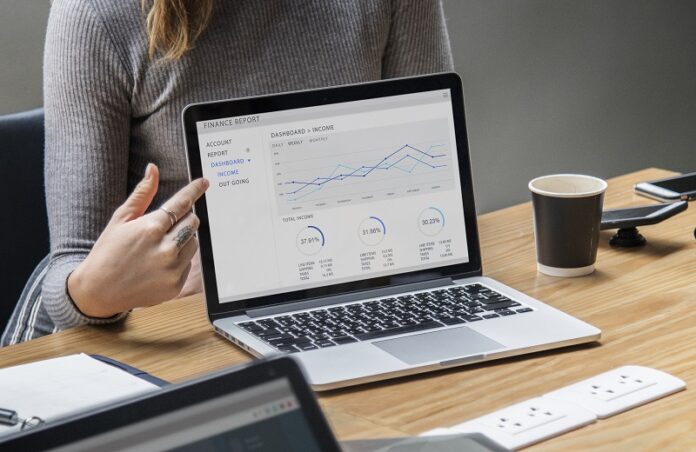Google Analytics 4 (GA4) represents a major evolution in Google’s analytics offerings. After years of dominating the web analytics space with Universal Analytics, Google has built GA4 to take advantage of new technologies and address emerging needs for cross-device tracking, advanced insights, and more.
Upgrading to GA4 brings some powerful new capabilities, but also requires rethinking aspects of implementation and reporting. In this comprehensive guide, we’ll cover everything you need to unlock the full potential of GA4 for your website or app analytics.
The Evolution from Universal Analytics to GA4
Google Universal Analytics (UA) has served as the standard Google Analytics implementation for over a decade. It provides a rich set of reports on site usage, traffic sources, conversions and more.
However, changes in user behavior and technology prompted Google to develop a new analytics offering built for the future. GA4 provides:
- Enhanced cross-device and app tracking with user-centric data
- More flexible event tracking and parameter collection
- Powerful machine learning for deeper insights
- Real-time reporting and ingestion of analytics data
For most organizations, upgrading to GA4 is advisable for improved analytics. However, UA will be supported through July 2023, giving time for a planned migration.
Key Differences Between Universal Analytics and GA4
Before executing an upgrade, it’s important to understand some fundamental differences in how GA4 approaches tracking and reporting compared to UA:
Event Tracking vs User Engagement Tracking
UA focuses on tracking pageviews along with events like PDF downloads or video plays. GA4 shifts emphasis to engagement and other event data, which provides a truer picture of user behavior across devices.
Sessions vs Users
UA associates data primarily with sessions and Devices. GA4 focuses on users, leveraging identifier cookies and account-level linking to connect data.
Hits vs Events
UA records “hits” for any page or asset loaded. GA4 only counts meaningful actions as Events.
Cookies vs User ID
UA uses first-party session and device cookies. GA4 uses identifier cookies and can ingest logged-in user IDs to connect data.
Reporting Differences
UA reporting incorporates a processing delay before data appears. GA4 ingests data immediately for real-time reporting.
Implementing Google Analytics 4 Tracking
Making the switch from Universal Analytics to GA4 requires setting up a new tracking code as well as importing historical data for continuity. Here are the implementation steps:
Creating a GA4 Property
The first step is to create a new GA4 property within your Google Analytics account. You can run UA and GA4 side-by-side for a transition period.
Setting Up Data Streams
GA4 introduces data streams for more control over what data gets collected and how it’s processed. Most users will only need a web stream.
Importing Historical Data
When creating your GA4 property, enable data import from UA to maintain continuity. About 90 days of historical data can be imported.
Linking GA4 with Other Google Tools
Leverage integrations with Google Tag Manager, Google Ads, and other tools for expanded capabilities within GA4.
Tracking Events and Parameters
Event tracking is central to GA4, encompassing clicks, downloads, video engagement, purchases, and more. Set up event tracking for key actions.
Custom Dimensions and Metrics
Extend GA4’s data collection through custom dimensions and metrics specific to your business needs, like affiliate codes or loyalty program levels.
Ecommerce and Enhancement Measurement
For online stores, implement ecommerce tracking and integrations with GA4’s enhancement suite for product-level insights.
Key Reports and Tools in Google Analytics 4
GA4 provides a suite of intelligent and flexible reports to gain insights from analytics data. Here are some of the most valuable reports to leverage:
Audience Reports
See details on active users, demographics, interests, acquisition channels, engagement and retention over time.
Acquisition Reports
Analyze traffic sources, campaigns, referrals, and how users arrive at your site or app. Identify top channels and content.
Behavior Reports
Understand how users interact with your site or app through metrics on events, pages/screens, funnel analysis, cohorts and more.
Conversion Reports
See your key conversions (like signups or purchases) and optimize conversion funnels over time.
Funnel Reports
Visualize how users flow through conversion stages and identify drop-off points.
Cohort Analysis
Track how user groups interact over time to see how engagement changes.
Custom Dashboards and Workflows
Build customized dashboards and workflows tailored to your important metrics and reporting needs.
Tips for Getting the Most from Google Analytics 4
While the basics of GA4 tracking are relatively straightforward, additional configuration and practices can help unlock more value:
Implement User ID Tracking
By collecting logged-in user IDs, GA4 can stitch together data across devices and sessions.
Focus on Events Over Pageviews
Pageviews are less important in GA4. Focus tracking on meaningful events to understand behavior.
Leverage Machine Learning Insights
GA4 auto-generates useful audiences and provides predictive capabilities.
Set Up Goals and Conversations
Configure goals and e-commerce to see your key conversions within GA4.
Build Custom Reports and Dashboards
Take advantage of GA4’s flexible reporting to surface the data you need.
Enable Integrations
Connecting GA4 with tools like Google Ads and Google Tag Manager expands capabilities.
Limitations and Challenges with Google Analytics 4
While GA4 is incredibly powerful, there are a few limitations to be aware of:
Dependence on Cookieless Tracking Methods
Due to increased browser cookie restrictions, GA4 relies more on identifier and client storage for analytics data.
Limited Historical Data Import
Only about 90 days of historical data can be brought into GA4 from Universal Analytics. Longer-term data is reset.
Less Flexibility Than Universal Analytics
GA4 has more constraints than UA given its focus on events over pageviews. Some use cases are restricted.
Steeper Learning Curve
With its new data model and capabilities, GA4 has a steeper learning curve than UA. Analysts will require training.
The Future of Analytics with GA4
While early days, GA4 lays the foundations for the next generation of Google Analytics. Some possibilities analysts can look forward to include:
- Further machine learning integration for predictive analytics and actionable insights
- Expanded cross-channel and cross-device tracking capabilities
- Enhanced integrations across Google’s marketing stack
- More automation in report generation and optimization recommendations
- Ongoing improvements to data ingestion and processing speeds
Google Analytics 4 Training
Introduction to Google Analytics 4 Training
Google Analytics 4 (GA4) is the latest version of Google’s free web analytics platform that helps track website traffic and user engagement. GA4 introduces a new data model and architecture from previous versions like Universal Analytics.
For marketers, web analysts, and digital professionals, getting training on GA4 is crucial to leverage the new capabilities effectively. Here’s an overview of key topics covered in GA4 training.
GA4 Basics and New Terminology
In GA4 training, participants learn foundational concepts and new terminology including:
- Events – The primary unit of measurement instead of pageviews
- Parameters – Additional data attributes tied to events
- Users and identifiers – Focus on individual users across devices
- Data streams – Different data sets configured in GA4
Key Differences from Universal Analytics
Training highlights critical differences in how data is collected and structured in GA4 vs Universal Analytics:
- Events vs pageviews
- User focus vs session focus
- Data modeling approach
- Cookieless tracking
- Real-time vs processed data
GA4 Implementation
Hands-on segments focus on proper GA4 setup including:
- Creating GA4 properties
- Installing tags and identifiers
- Configuring data streams
- Importing historical data
- Tracking events and parameters
- Setting up user ID tracking
GA4 Reports and Tools
Participants learn how to access and navigate key GA4 reports:
- Audience overview
- Engagement reports
- Acquisition reports
- Funnels
- Custom dashboards
- Cohort analysis
Advanced Configuration
Additional training covers more advanced GA4 functionality:
- Custom metrics and dimensions
- E-commerce and enhanced measurement
- App + web data consolidation
- Integrations with other Google tools
- BigQuery exports
- Server-side streams
Getting the Most from GA4
Tips and best practices covered for effective adoption:
- Focus on events over pageviews
- Build dashboards tailored to goals
- Incorporate machine learning insights
- Enable cross-device user ID tracking
- Take advantage of GA4’s flexible architecture
The future of analytics is data-driven, cross-channel, and focused on individual consumer journeys. Comprehensive GA4 training ensures analytics teams can use the platform strategically to derive customer and business insights.
Also Read: PROJECT MANAGEMENT GOLD: JJK LINEAGE TRELLO’S HANDBOOK OF UNRIVALED BEST PRACTICES
A/B Testing with Google Analytics 4
A/B testing, also known as split testing, is an essential technique for optimizing digital marketing and user experience. Google Analytics 4 (GA4) provides robust tools for setting up and analyzing A/B tests.
How A/B Testing Works
In an A/B test, two variants (A and B) of a page, email, ad, etc. are compared to see which performs better on a target metric like conversions or clickthrough rate. Users are randomly shown one of the variants.
Key elements of an A/B test include:
- The control – Original version
- The variation – Modified version
- Traffic allocation – Evenly splitting users between variants
- Statistical significance – Ensuring enough data to identify the winner
Proper test design, segmentation, and analysis are crucial to get valid, actionable results.
A/B Testing in Google Analytics 4
GA4 has dedicated capabilities for A/B testing built directly into the platform.
Setting Up A/B Tests
In GA4, A/B tests are configured under Experiments. You designate the experiment objective, percentage of traffic, variants, and duration.
Assigning Variants
Variants can be assigned to users automatically via server-side or client-side, or manually via segments.
Analyzing Results
The GA4 Experiments report shows key metrics for each variant. Statistical significance is calculated automatically.
Determining a Winner
GA4 makes it easy to visually identify the winning variant based on positive statistically significant results.
Improving Tests
Results can be further analyzed to improve tests. Additional variants can also be added to expand testing.
Benefits of A/B Testing with GA4
Key advantages of leveraging GA4 for A/B testing include:
- Easy-to-use visual editor for setting up tests
- Automated traffic allocation and significance testing
- Fast access to results with real-time reporting
- Analysis across any dimension, not just conversions
- Built-in segmentation and multi-variant functionality
- Ability to target tests to specified audiences
Overall, GA4 provides a streamlined, no-code A/B testing solution for marketers with minimal analytics expertise required.
Tips for Effective A/B Testing
To maximize the impact of A/B testing with GA4, keep these tips in mind:
- Limit one variable per test
- Test pages or elements with high-traffic
- Let tests run sufficiently long
- Leverage segments to test different audiences
- Analyze metrics tied to your goals
- Integrate winning variants into site or campaigns
A/B testing is a go-to technique for optimization and GA4 makes it accessible for organizations of any size.
Conclusion and Key Takeaways
Upgrading to GA4 requires some reorienting, but brings significant new capabilities to enterprise analytics. As Google continues to invest in GA4, it will only become more powerful and flexible over time.
Key takeaways for unlocking GA4’s full potential include:
- Understand key differences from Universal Analytics, like the focus on events
- Follow best practices like user ID tracking for cross-device insights
- Take advantage of machine learning and custom reporting
- Maintain historical data continuity through import from UA
- Enable integrations across marketing and analytics tools
- Leverage GA4 for both web and app analytics
With proper implementation and adoption across teams, GA4 can provide the cutting-edge analytics needed to drive growth, engagement, and conversions moving forward.













